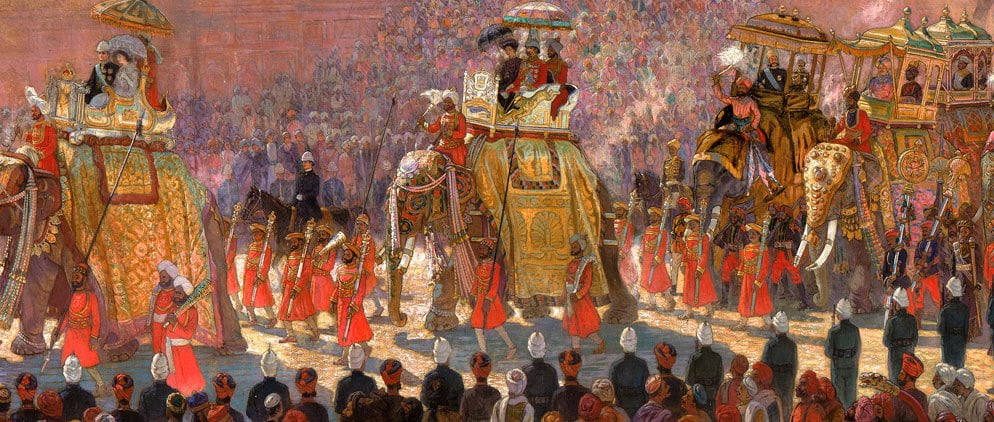The coronation celebrations held in Britain in 1902-3 for the new King Edward VII were reflected in an elaborate spectacle created by Lord Curzon in India, then part of the British Empire.
Photographer James Ricalton says in The Underwood Travel Library: Stereoscopic Views of India (1907): “There was some marvelous and strange function for each day of the Durbar; but I only have time and space to place before you a glimpse of the most splendid and dazzling, the most bewildering and spectacular feature of the entire Durbar, viz.: – the ‘State Entry’, which included this parade of two hundred and nineteen of the largest and most stately elephants in all India, richly and extravagantly caparisoned in gold and silver and richest silks, and ridden by their princely owners dressed in durbar costumes, sparkling with priceless gems… the most magnificent procession of elephants the world has ever witnessed.”
The Durbar attracted bitter criticism for its extravagance in a country whose own population faced extreme poverty. The 1902 Durbar came just two years after a ruinous famine, and even among those of high rank in Indian society, the event was not welcomed. Mahatma Gandhi noted in his autobiography that many of the maharajas invited to take part privately deplored the lengths to which they had to go, the elaborate costumes and finery they had to wear, in order to impress the British sufficiently to hold on to their privileges. (An Era of Darkness, Shashi Tharoor, 2016).
The Peacock Dress was made for Vicereine Lady Mary Curzon to wear at the Coronation Ball at the climax of the celebrations in Delhi on January 6th, 1903. By utilising the skills of Indian embroiderers to dazzling effect, it was intended to symbolise Britain’s support and patronage of Indian craftsmanship, as well as the sovereignty that Britain claimed over India at the time.

